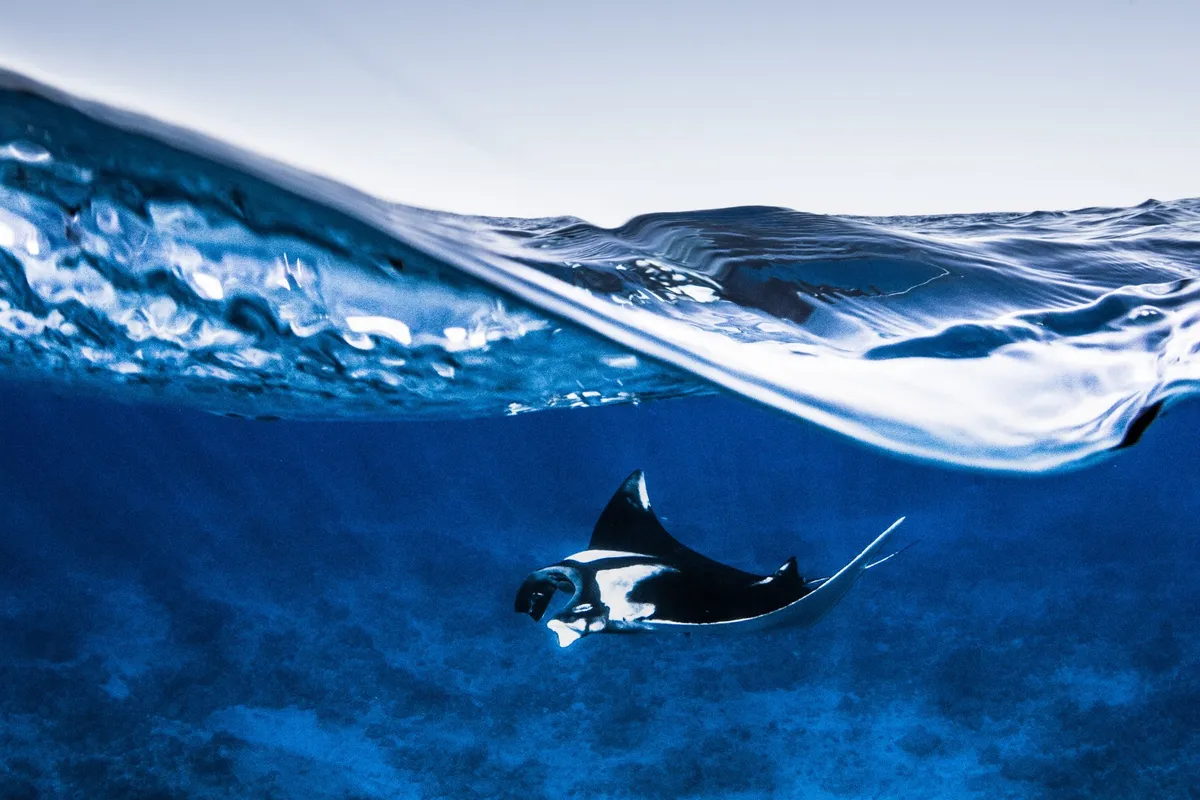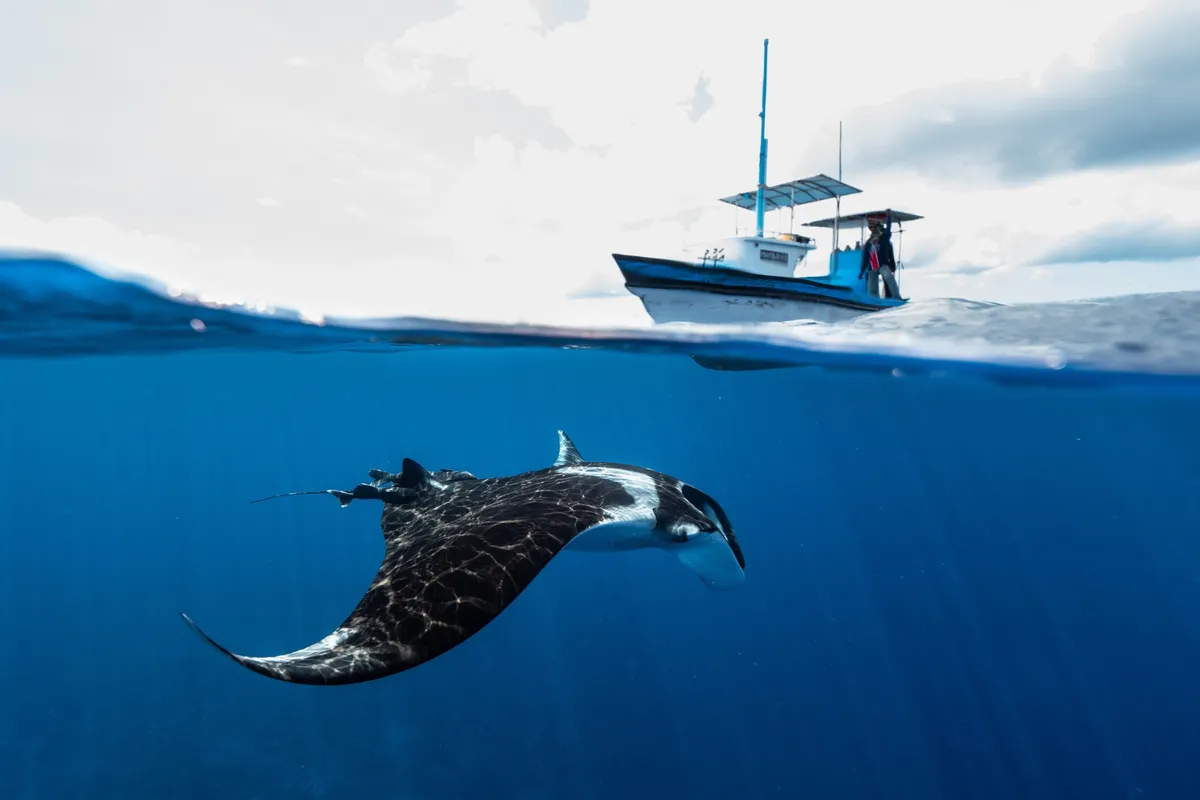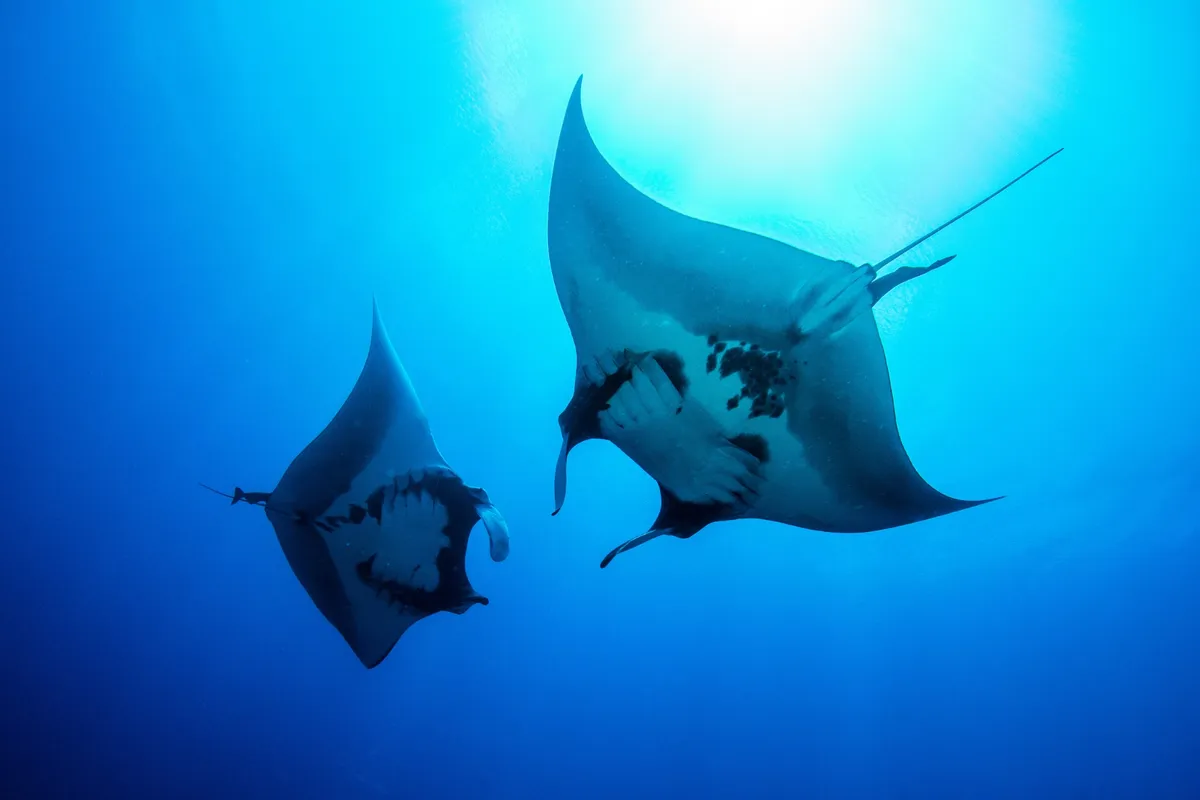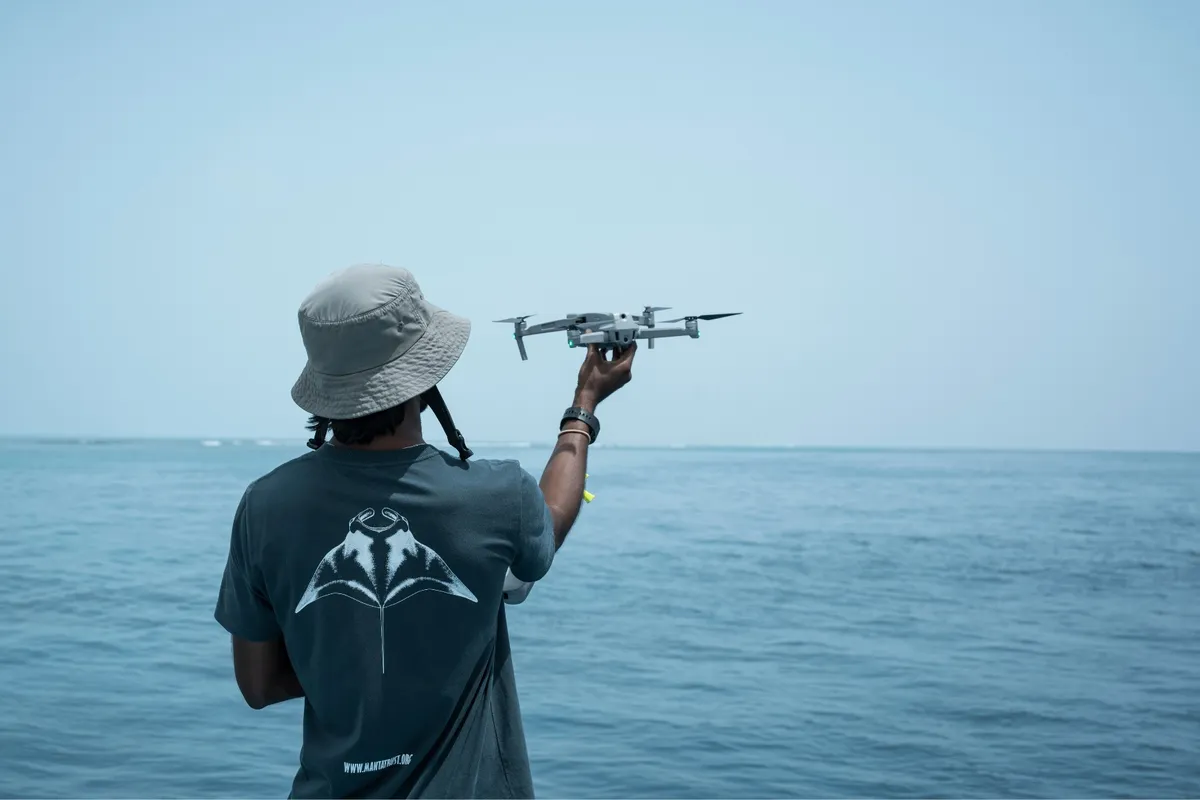1,000 individual oceanic manta rays have now been identified in Maldivian waters. According to the Maldives Manta Conservation Programme (MMCP) – the Manta Trust’s flagship project, which confirmed the 1,000th individual – this makes the Maldives home to the world’s third largest population of the species.
The manta has been named ‘Anbu’ which means mango in Dhivehi, the language of the Maldives.
Oceanic mantas (Mobula birostris) are the world’s largest species of ray. Their wingspan can reach up to 7 metres – almost as long as an iconic London Routemaster bus – hence why they’re also known as giant mantas.

These gentle giants, which feed on plankton, can be identified by the markings on their underside.
“Manta rays can be identified by the unique spot pattern on their belly, much like a human fingerprint,” explains Fauz Fath-hee, RahVeshi Programme Coordinator at MMCP.
“We dive down below the manta ray, either by scuba diving or freediving, to take a photo of the spots on the manta rays’ bellies and we log each sighting in our ever-growing database.”
The charity has been studying mantas in the Maldives since 2005 but has ID photos going as far back as 1996.
Citizen scientists and local scuba diving centres have also contributed photos in support of this important research.
Although the Maldives is made up of 1,200 islands, nearly all sightings (85%) were from Fuvahmulah Atoll, a pelagic island in the south of the country known for its tiger shark dives.

With 1,000 individuals in its waters, the Maldives is home to the world’s third largest population of giant mantas (it also has the most reef mantas (Mobula alfredi) in the world, with over 5,000 individuals).
Ecuador has the largest oceanic manta population, “with 2,803 confirmed individuals but an estimated 22,316 individuals based on Proyecto Mantas Ecuador’s data,” says Fath-hee.
The Pacific Manta Research Group has identified nearly 1,400 individuals in the Revillagigedo Archipelago in Mexico’s Eastern Pacific waters “so, the Maldives population is very close to becoming the second largest,” he adds, with the Indonesian archipelago of Raja Ampat in fourth with 588 individuals.

The researchers don’t yet fully understand why there are so many manta rays in the Maldives.
“Unlike other oceanic manta ray aggregation sites, there is limiting feeding, cleaning or courtship behaviour observed,” says Fath-hee who believes the rays may be transiting through because they are usually seen for only a day or two and re-sighting rates are low. “Where they are coming from and where they are going is still a mystery.” he says.
According to the IUCN Red List of Threatened Species, oceanic mantas are endangered so confirming there are at least 1,000 individuals gives conservationists hope.
However, they are concerned the animals might be swimming on to Sri Lanka, where they could be under threat.
“Oceanic manta rays are known to swim great distances, with some individuals traveling thousands of kilometres in search of food, mating opportunities, and suitable habitats,” says Fath-hee

Sri Lanka, which is just 1,000km away, has the world’s largest oceanic manta ray fishery and is believed to catch around 1,000 individuals each year. “There’s a high possibility that these rays could be moving between the protected waters of the Maldives and Sri Lanka’s waters where they face a high risk of being fished,” he says.
